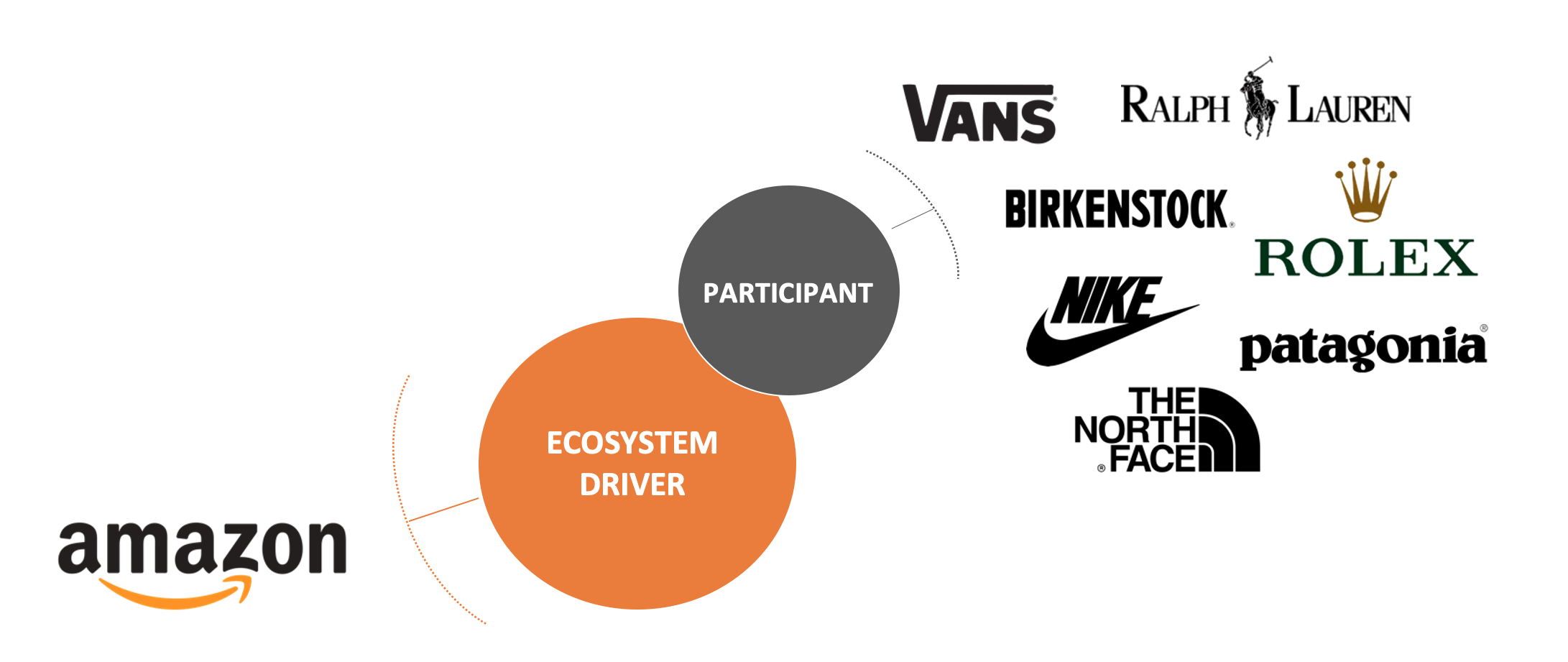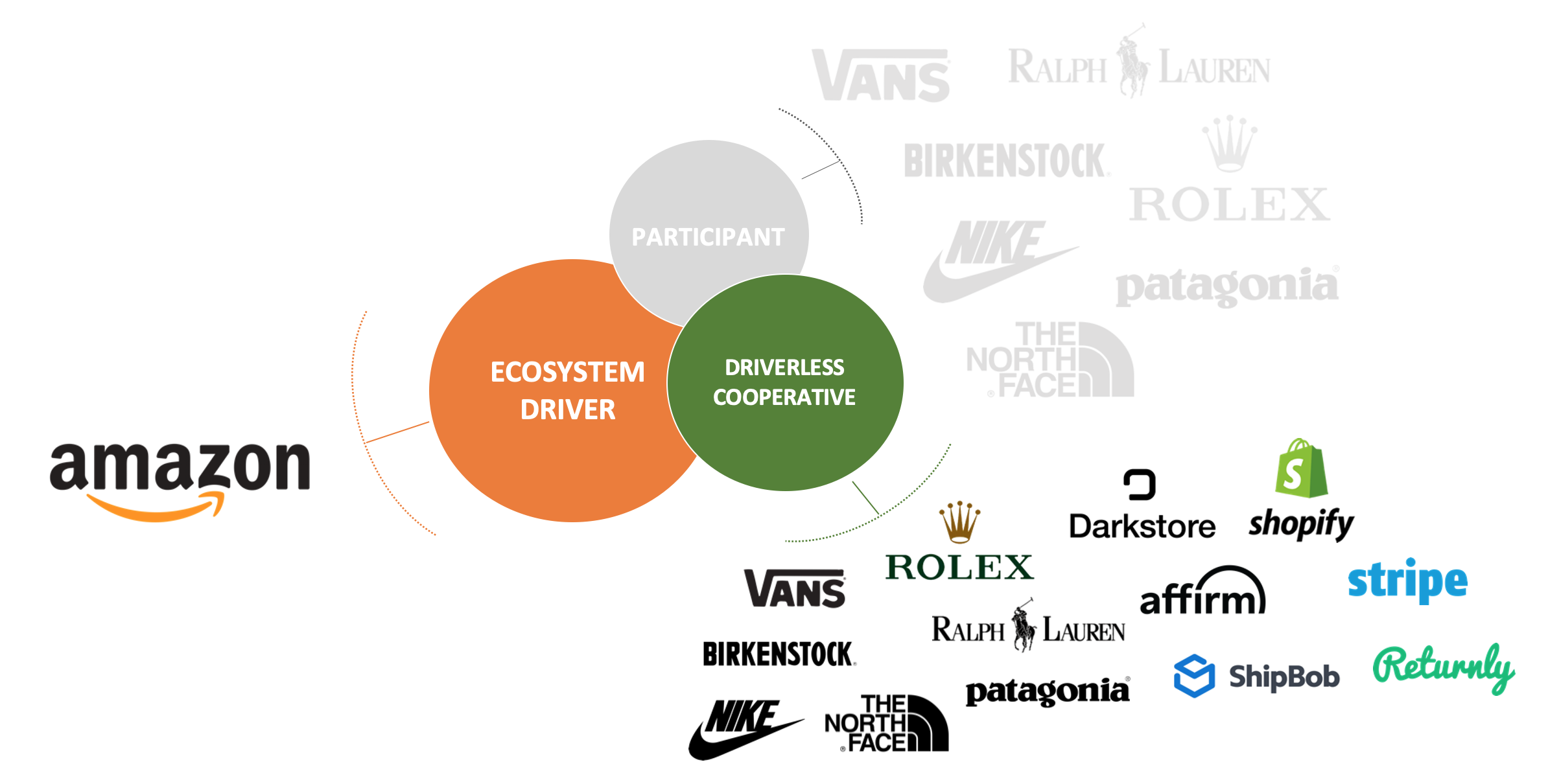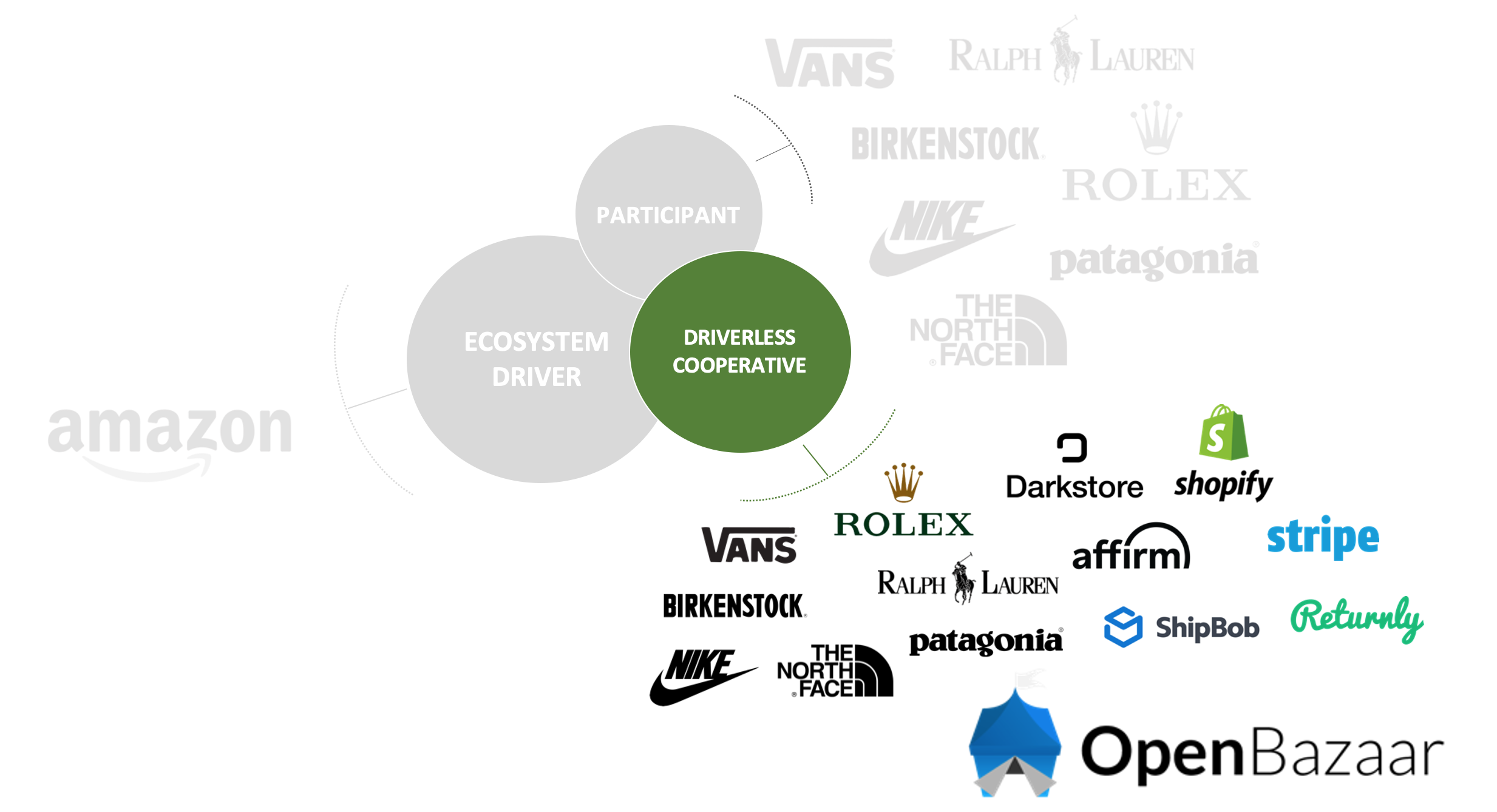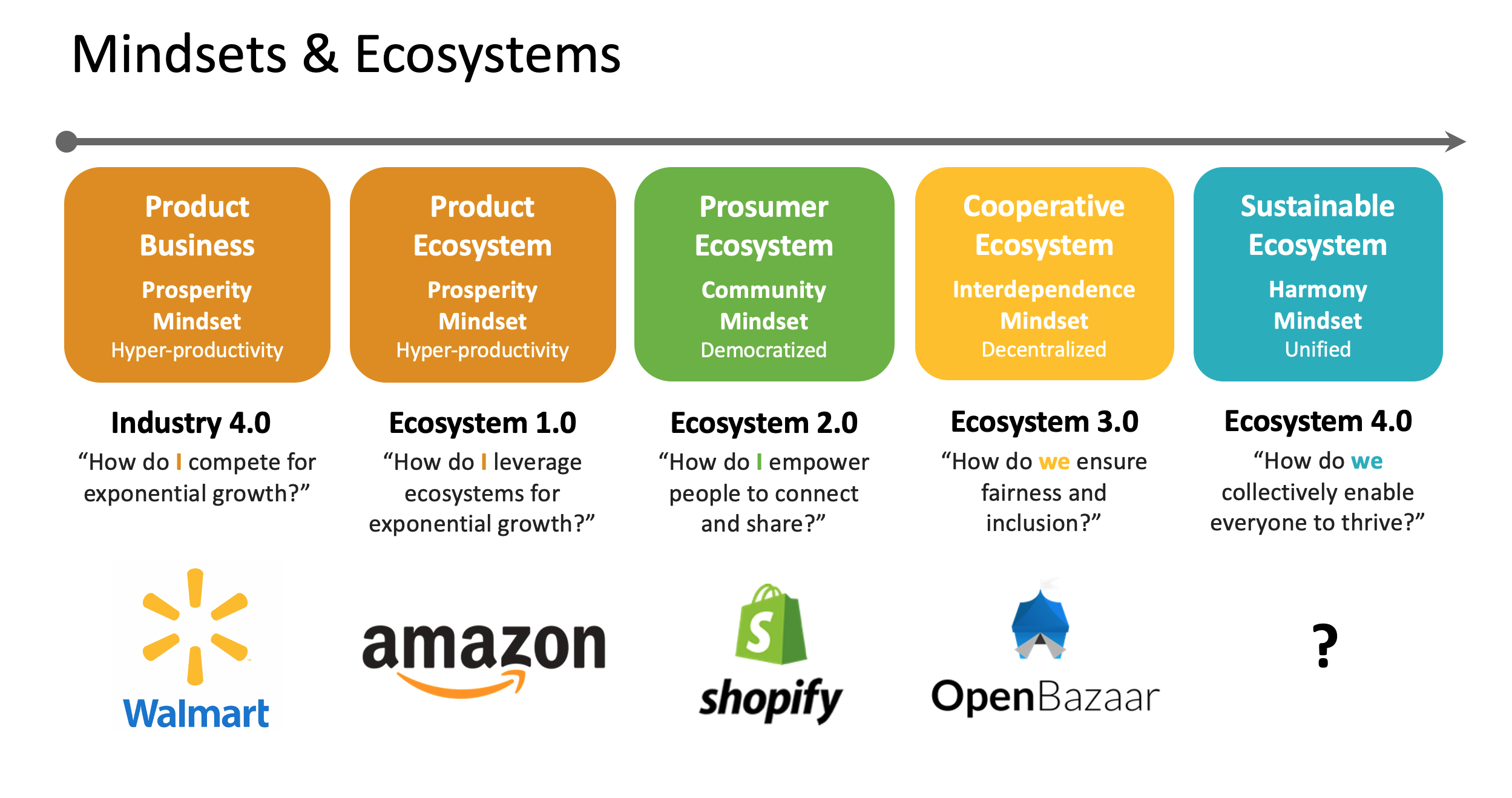Since 2014, I’ve explored the emergence of ecosystems and our progression toward cooperative models in this blog. I’ve continued to see more evidence that this future is emerging. I recently read this article ( Is This The Beginning Of Amazon’s Meltdown? by Stephen McBride) that signifies a shift toward cooperative ecosystems happening in the retail industry. It highlights the Shopify ecosystem and demonstrates how our progression towards decentralization is playing out. I’ve summarized the article below and added some graphics to illustrate the progression. I’ll also offer my thoughts on why I believe this retail example applies to almost any industry.
Ecosystem Drivers and Anchored Platforms
I previously described two governance approaches to ecosystems. Anchored platforms are governed by a driver or orchestrator that is either a current major entity or an entity that emerges. The driver approach is a winner take most approach in which the driver controls customer relationships and data and dictates terms of both the demand and supply side of a market. In the retail market, that driver is Amazon. Figure 1 below depicts the driver model and the major brands that once depended on Amazon’s driver model for their online sales.

Distributed Platform Ecosystems
Amazon’s driver model, however, is rapidly becoming susceptible to competition as new models emerge to enable brands to retain control of their customer relationships and data. Figure 2 depicts how big brands have left Amazon in favor of Shopify, an ecommerce marketplace that features over 2,400 independently created apps and services that help retailers go direct to the consumer. In fact, McBride’s article notes that over 1 million retailers have left Amazon to join the Shopify ecosystem. This quote from Shopify COO Harley Finkelstein further epitomizes this ecosystem progression.
“There’s an inherent danger, if we are not focused, the future of commerce will be held in the hands of a few monolithic players. For commerce to survive, it needs to be in the hands of many, and not the few.”

By promising to create more value for its ecosystem than it captures itself, Shopify has curated an ecosystem of developers, designers, marketers, and agencies that have empowered retailers to manage their ecommerce operations independently.
Decentralized Ecosystems and Platform Cooperatives
The Shopify ecosystem has worked well for big brands and mom and pop shops alike. Yet, it does come at a cost to consumers accustomed to the convenience of Amazon as a single point for all their online shopping. This is where open cooperatives like OpenBazaar offer a further progression toward decentralized ecosystems. OpenBazaar is an open source project developing a protocol for e-commerce transactions in a fully decentralized marketplace with no fees and no restrictions. Figure 3 depicts a driverless cooperative between the Shopify ecosystem and OpenBazaar. By featuring their storefronts on OpenBazaar, Shopify merchants can congregate with consumers and reduce marketing costs without sacrificing their customer relationships or data. Likewise, this would provide consumers with a single place for online shopping.

Ecosystem Pattern of Progression
The retail industry progression follows the spiral dynamics value system pattern I’ve used throughout this blog to make sense of how ecosystems are emerging. Figure 4 below depicts how mindsets and value systems are influencing the ecosystems emerging in the retail industry.

The industry has steadily progressed toward decentralization as follows:
Industry 4.0 – in the pre-ecosystem mindset, businesses like Walmart used supply chain efficiency and digital technologies to maximize their growth & profitability. Mindset: prosperity / Value Proposition: consumer side cost & convenience.
Ecosystem 1.0 -Amazon developed a market-making platform to create an ultra convenient online shopping experience for consumers and became the de facto ecommerce provider for retailers. Mindset: prosperity / Value Proposition: consumer-side cost & convenience.
Ecosystem 2.0 – As retailers became disadvantaged by Amazon’s platform, Shopify began curating a peer to peer community for entrepreneurs to support each other’s e-commerce efforts. Mindset: community / Value Proposition: supplier-side community.
Ecosystem 3.0 – OpenBazaar’s third iteration of ecosystem is a cooperative ecosystem that’s open and governed by it’s members to ensure fairness. Mindset: interdependence / Value Proposition: consumer-side cost & convenience and supplier-side community.
Ecosystem 4.0 – the fourth iteration of ecosystem has yet to emerge, but given that it would be motivated by a turquoise harmony mindset, it would likely build on ecosystem 3.0 by employing sustainable approaches to ensure all activity operates in balance with the earth’s ecosystems.
Summary
This retail example highlights the tendency for cooperative alternatives to emerge as ecosystem drivers begin to dominate a market. It highlights the power of communities of individuals and businesses to perhaps act as a new form of invisible hand that guides markets to remain balanced, fair and inclusive. Lastly, it signifies a shift in the value of an ecosystem from the platform to its community members. This is important for organizations exploring platform and ecosystem strategies to understand because it highlights an emerging trend that’s steadily progressing toward decentralization.
